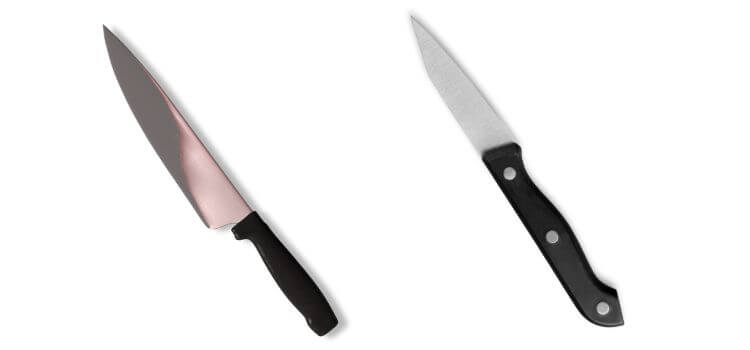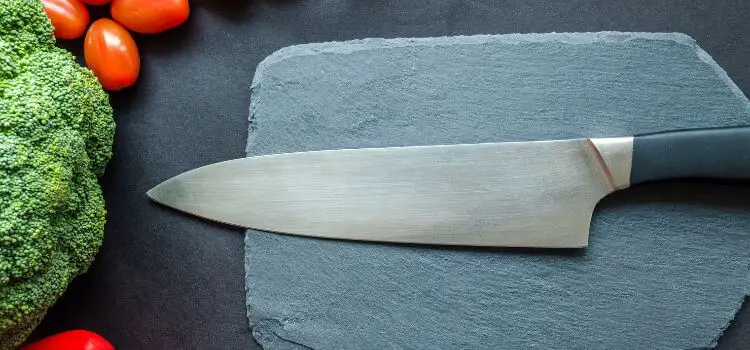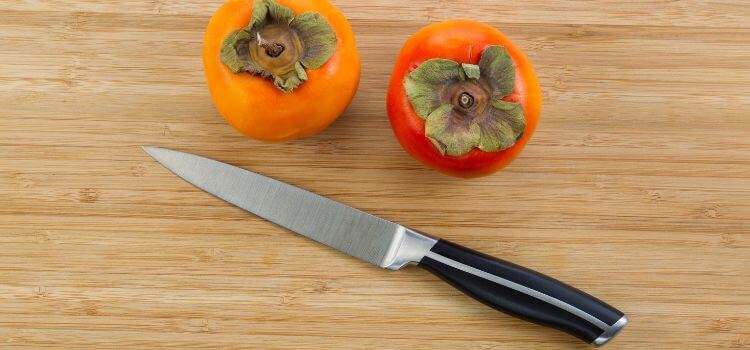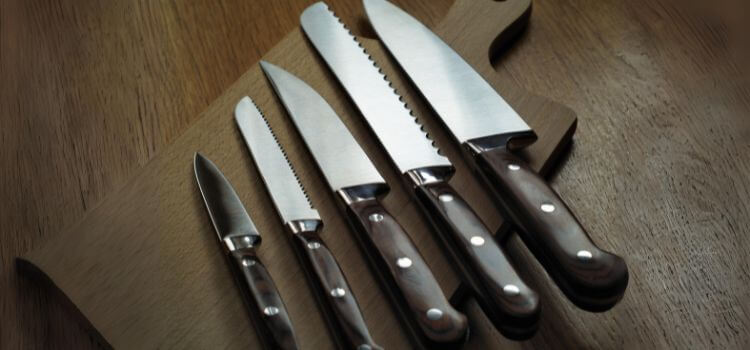As an Amazon Associate, I earn from qualifying purchases

In the world of culinary arts, the choice of knives can make a significant difference in the outcome of your kitchen endeavor’s. Two knives often find themselves compared to the petty and paring knives. Although they might appear similar upon initial observation, every knife possesses distinct advantages and specific uses that differentiate them.
Join us as we delve into the nuances of these two kitchen essentials to help you understand which one reigns supreme in different cooking scenarios.
What is a Petty Knife

The petty knife, also known as a utility knife, is a general-purpose kitchen knife that falls between the versatile chef’s knife and the smaller paring knife in size. It typically ranges from 4-7 inches in blade length and has a pointed tip for piercing and precise cutting. The blade is usually thinner than a chef’s knife, making it ideal for tasks that require more finesse and control. Its size and design make it popular for professional chefs and home cooks.
Features and characteristics of the petty knife
- Versatile and multi-functional knife
- Perfect for tasks necessitating precision and mastery
- Perfect for slicing, dicing, mincing, and peeling small ingredients
- Thin and sharp blade for delicate cutting
- Pointed tip for piercing through tough skin or making intricate cuts
Applications and uses in the kitchen.
Due to its size and design, the petty knife has many applications in the kitchen. Some common uses include:
- Prepping fruits and vegetables: The thin and sharp blade of the petty knife makes it perfect for peeling, slicing, and dicing small ingredients like garlic, shallots, and herbs.
- Trimming meat: Its pointed tip allows for precise trimming of fat and skin from meats.
- Making decorative cuts: The pointed tip can be used for making intricate designs or patterns on fruits and vegetables, adding a professional touch to your dishes.
- Cutting sandwiches and baked goods: The petty knife is also great for easily slicing sandwiches, cakes, and other baked goods.
What is a Paring Knife

The paring knife, a compact and nimble tool for the kitchen, boasts a blade that usually measures between 2 and 4 inches in length. Its compact blade and tapered tip are ideal for tasks demanding greater control and precision. The design of the paring knife allows for easy manipulation and maneuverability, making it a favourite among chefs for delicate work.
Features and characteristics of the paring knife
- Small and lightweight for precise control
- Perfect for tasks that require intricate cutting or peeling
- Pointed tip for piercing through tough skin or making detailed cuts
- Ideal for trimming small fruits, vegetables, and herbs
Applications and uses in the kitchen.
The paring knife’s small size and maneuverability make it a versatile tool in the kitchen. Some common uses include:
- Peeling: The paring knife’s pointed tip and thin blade make it perfect for precision peeling fruits and vegetables.
- Deveining shrimp: The sharp edge of the paring knife can easily be cut through tough shells to remove veins from shrimp.
- Coring and seeding: The sharp tip is ideal for extracting seeds or cores from fruits and vegetables.
- Garnishing: The small paring knife makes it great for creating intricate garnishes to decorate plates and cocktails.
A Comparison: Petty Knife vs Paring Knife

The Petty Knife, with a blade length of 4-7 inches, serves as a general-purpose, versatile tool for precision cutting and maneuvering. It is commonly used for prepping fruits and vegetables, trimming meat, making decorative cuts, and slicing sandwiches and baked goods. Its blade shape is straight-edged with a pointed tip. On the other hand, the Paring Knife, smaller with a 2-4 inch blade length, is designed for delicate tasks requiring precise control. It features a curved or straight edge with a pointed tip and is commonly employed for peeling, deveining shrimp, coring and seeding fruits and vegetables, and garnishing.
Strengths and weaknesses
Strengths of Petty Knife:
- Adaptable and multifaceted, designed for an array of culinary tasks
- Thin and sharp blade for delicate cutting
- Pointed tip for piercing through tough skin or making intricate cuts
Weaknesses of Petty Knife:
- It may not be suitable for heavy-duty tasks as it is smaller in size compared to other knives
Strengths of Paring Knife:
- Ideal for tasks demanding precision and control
- Small and lightweight, allowing for easy manipulation and maneuverability
Weaknesses of Paring Knife:
- Limited in use due to its small size, not suitable for larger ingredients or heavy-duty tasks
Which knife is ideal for specific tasks in the kitchen?
The petty and paring knives each possess unique strengths and weaknesses, rendering them more or less suitable for various culinary tasks. Generally, the petty knife is a more versatile tool that can handle many functions, while the paring knife excels at delicate work requiring precision and control. Below are illustrative scenarios for the appropriate use of each type of knife:
- Use a putty knife for slicing, dicing, mincing, and peeling small ingredients like garlic and herbs.
- Use a paring knife to create intricate designs or patterns on fruits and vegetables or remove seeds from produce.
- If you need to trim fat or skin off meats, the pointed tip of the petty knife would be more effective.
- The paring knife’s pointed tip and sharp edge would be better suited for deveining shrimp or peeling fruits with thicker skin.
Conclusion
In summary, the significance of petty and paring knives in any kitchen cannot be overstated. Their versatility and precision make them indispensable tools for culinary tasks. While the petty knife is multi-functional, the paring knife is smaller but excels at delicate tasks. Each has unique features and uses, making them valuable additions to any cook’s collection of knives.
So, it’s important to have both of these knives in your kitchen for a well-rounded and efficient cooking experience. Experiment with them and discover which one suits various tasks best! Enjoy your slicing and dicing journey!
As an Amazon Associate, I earn from qualifying purchases
Pingback: Boning vs Fillet Knife